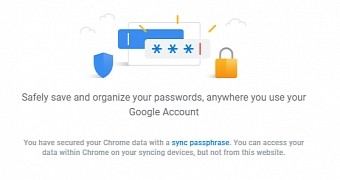Android users will have a much easier time managing log-ins because Google is now allowing people to use the fingerprint rather than the password.
Having to remember passwords for all the online service you’re using can prove challenging. That’s the main reason why people choose to have the same password on multiple websites, which in turn exposes them to even more vulnerabilities. If only one of those services gets hacked, all of the others are in jeopardy.
Of course, you can choose to use a password manager or simply to save the passwords, with Android’s help, but that’s still a problem. The best solution would be to use the existing security measures, such as the fingerprint or the pin, to log in into various services.
The solution is only halfway
Google is now allowing users to login into some of their accounts, with the help of the fingerprint, through in the Chrome browser. It’s a long way from using this feature with third-party apps, but it’s getting there.
“We are happy to announce that you can verify your identity by using your fingerprint or screen lock instead of a password when visiting certain Google services. The feature is available today on Pixel devices and coming to all Android 7+ devices over the next few days. These enhancements are built using the FIDO2 standards, W3C WebAuthn and FIDO CTAP, and are designed to provide simpler and more secure authentication experiences. They are a result of years of collaboration between Google and many other organizations in the FIDO Alliance and the W3C,” writes Dongjing He, Software Engineer and Christiaan Brand, Product Manager at Google.
For this new feature to work, users will need Android 7.0 (Nougat) or later, a personal Google Account on an Android device, and a lock screen set up. Users need to open Google Chrome, go to https://passwords.google.com, choose to view or manage a saved password and follow the instructions.
The new service doesn't mean that you no longer have to use two-step authentification, as that’s still in place. But it’s a step in the right direction, towards a more passwordless world.

 14 DAY TRIAL //
14 DAY TRIAL //